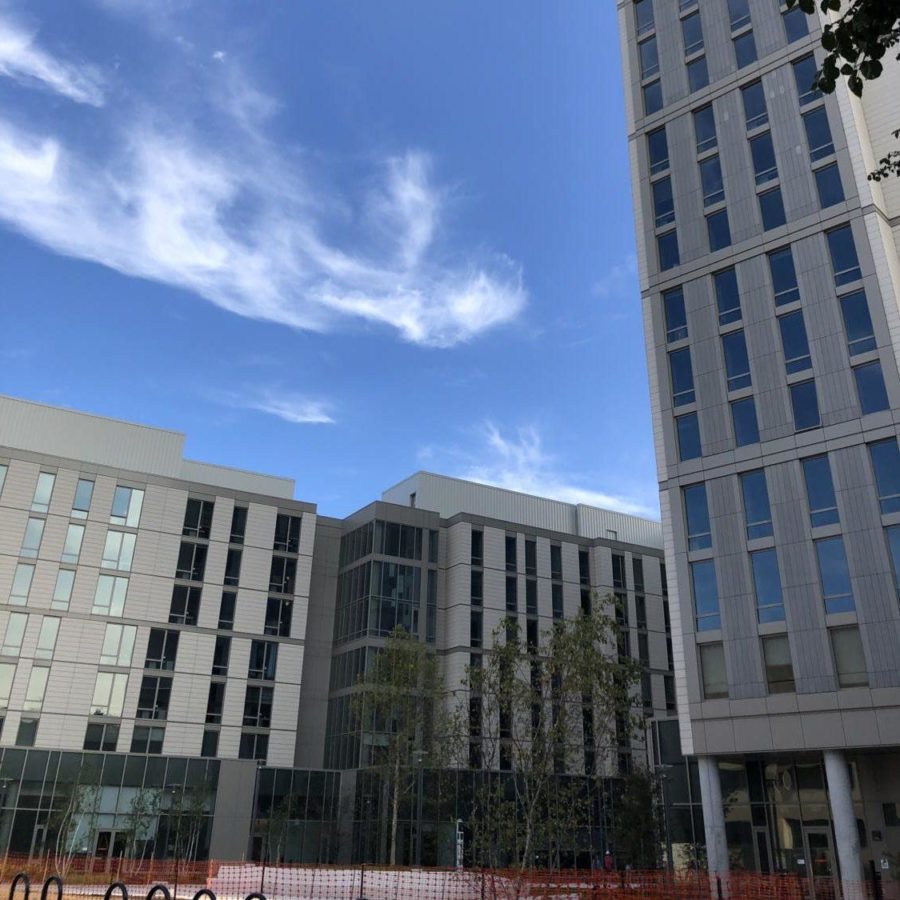Woodlawn Residential Commons, the University’s latest undergraduate housing development, opened in socially distanced conditions in the midst of the COVID-19 pandemic. First-years living in Woodlawn cite the dorm’s size, dining hall, and new facilities as positives—and its remote location, poor construction choices, and lack of house culture as negatives.
Sam Reynolds, a first-year living in Gallo House, mentions that the construction of the rooms themselves has led to some issues—especially given the large amount of time which is currently spent indoors. “The walls are thin. I can oftentimes hear my neighbors on their Zoom calls, so sometimes it’s a little bit weird,” Reynolds said.
Beyond construction, the bare aesthetic of the rooms is a common complaint. Individual dorm rooms feature unfinished concrete ceilings and stark white drywall. “The ceilings look kinda daunting. They look pretty concrete,” Yovovich House resident Hannah Ni said. “It’s like they hired the painters but forgot about painting the ceilings.” José Gomez from Chenn House was harsher: “The aesthetics feel like a prison.”
Despite complaints about the building’s finish, most first-years are in agreement that the rooms in Woodlawn are fairly nice. Given that the construction of the dorm was only finished over the summer, those living in Woodlawn have the privilege of living in brand-new rooms, with brand-new amenities. “I definitely think our rooms are better. I might be biased, because I have a double to myself. But also, because it was just built this year, all the rooms and facilities and bathrooms are super clean,” Gallo House resident Uma Mani said.
The new Woodlawn Dining Commons also received favorable reviews. “I think the dining hall is pretty good,” Mani said. “I’ve been to all four [dining halls], and Woodlawn is either best or second-best.” Gomez agreed.
One frequently mentioned drawback of Woodlawn is its remote location. Built south of the Midway, the dorm is a fifteen minute walk from the main quads. Fortunately, for those without in-person classes, there is not necessarily a need to leave Woodlawn—the dining commons are located right downstairs. Nevertheless, this distance can feel isolating for Woodlawn residents. “It feels a little removed from the rest of campus, which I don’t really like. I guess that would be one of my complaints,” Mani said.
With a total of 11 houses, Woodlawn is one of the larger dorms at the University. However, some residents feel as if the new dorm has yet to develop a sense of identity. “I feel like because we’re so new, [the dorm] still doesn’t have house culture,” Gomez said.
Other residents have reacted more favorably. “I think that it’s kind of cool that we have 11 houses, because a lot of the dorms only have eight or less,” Reynolds said. “It’s kind of cool because I can actually meet people from all around Woodlawn. I meet a lot more people than I would if I were in a different dorm.”
Woodlawn has dealt with its fair share of opening snafus. One persistent issue is an overly sensitive fire alarm. Between September 28 and October 1, there have been three recorded cases of fire alarms in Woodlawn going off which, according to an email sent by Housing and Residential Life, were caused by “the fire smoke detector in a mechanical room being activated.” Many residents said they were irritated by the inconvenience.
“Because I live on the seventh floor, it was sometimes tedious having to walk down the stairs and go to our meeting place. I was especially stressed when [the fire alarm] happened during important [Zoom] meetings,” Ni said.
“It was pretty cold outside,” Gomez said. “I just hope they don’t have them in the winter.”
However, some residents saw this as an opportunity to meet new people. “It didn’t really bother me much,” Mani said. “I actually made a few friends during the fire alarms because it let me bump into people in my hall who I hadn’t seen before.”









